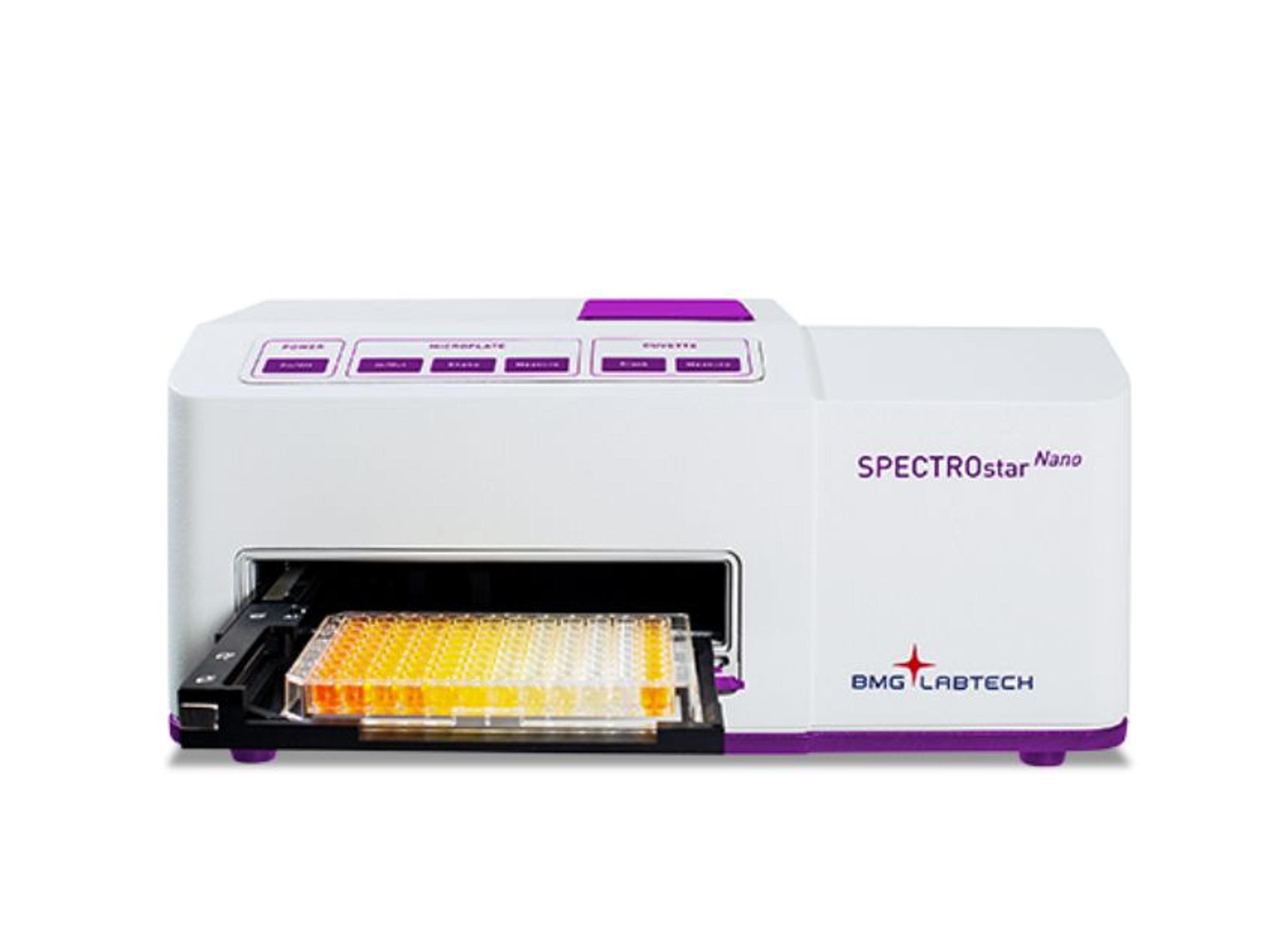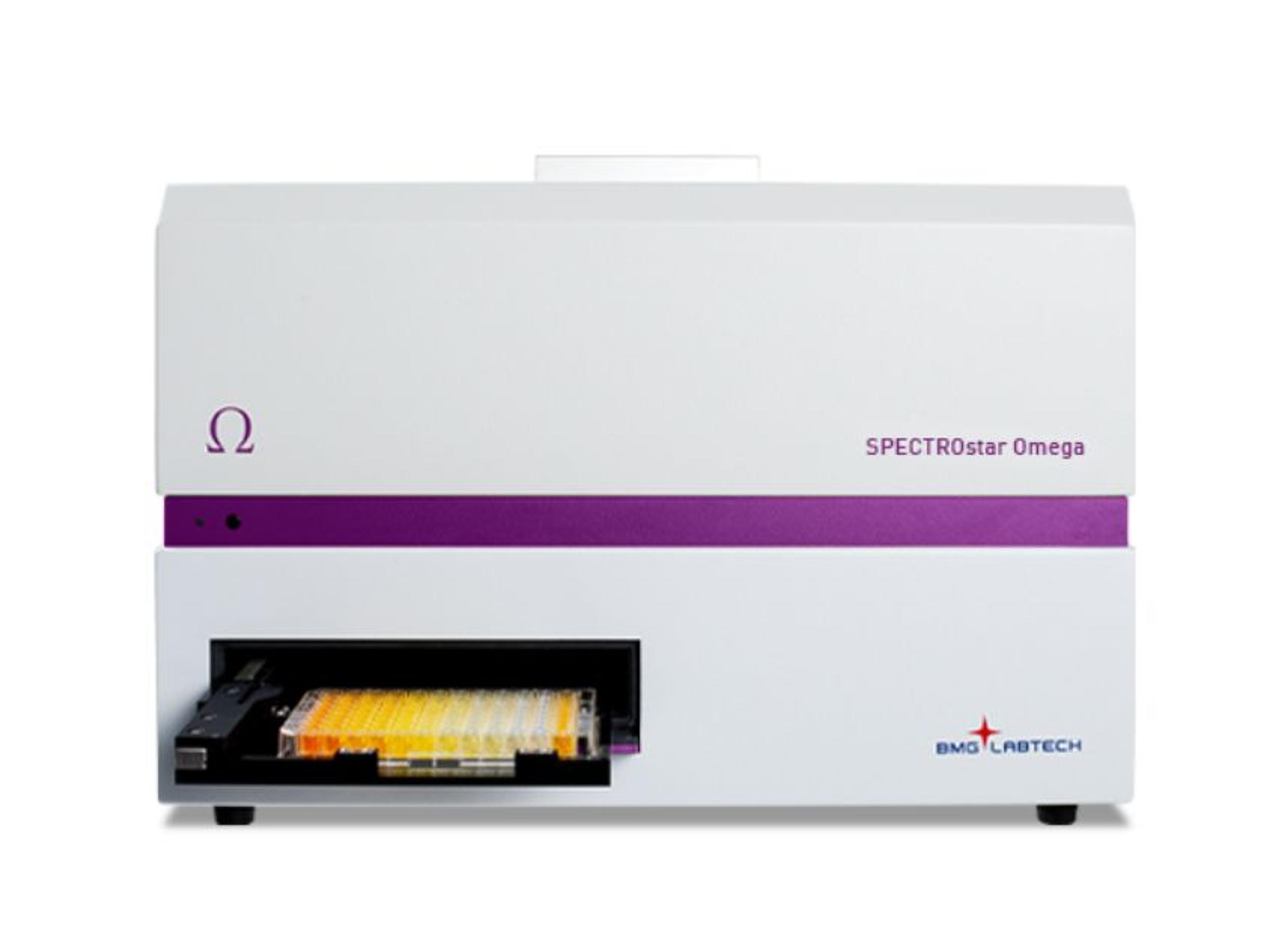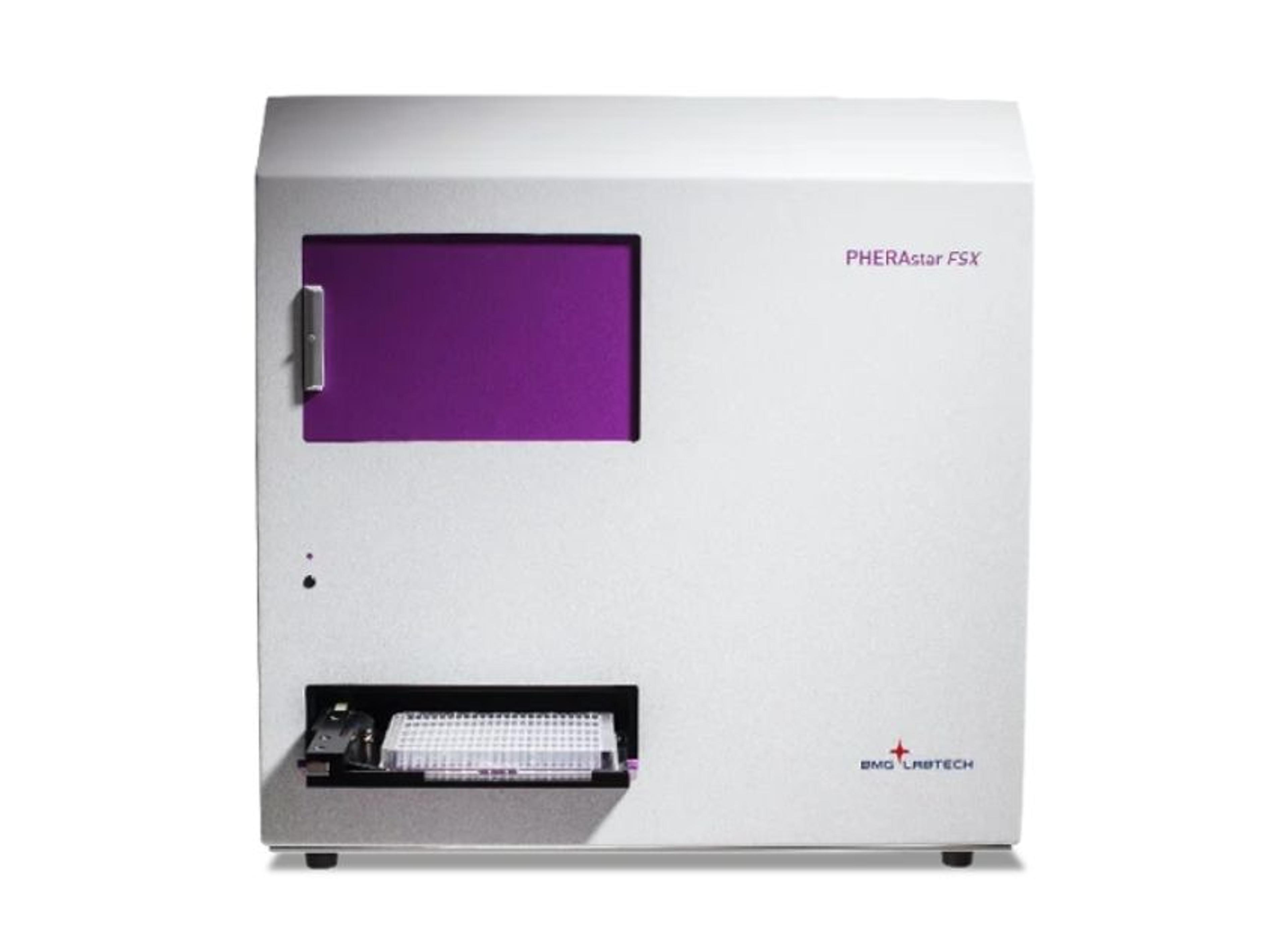Label-Free Assays Benefit from Microplate Readers with CCD Spectrometer Technology
19 Jul 2012The SoPRano™ label-free assay platform from PharmaDiagnostics has been certified to work on all BMG LABTECH microplate readers that have a CCD spectrometer. With this label-free assay platform, IC/EC50s and Kds can be determined for biological interactions such as protein-protein or antibody-antigen.
Based upon well-known Surface Plasmon Resonance (SPR) technology that has previously only been found in expensive dedicated biosensing equipment, the SoPRano™ label-free technology uses Localized Surface Plasmon Resonance (LSPR) – active Gold Nano Rods (GNRs) that can detect the binding of molecules to the GNR surface in a concentration dependent manner.
A key feature to the SoPRano™ label-free assay is that an absorbance microplate reader can be used to measure the change in the LSPR signal upon binding, which manifests as a red-shift in the maximum absorbance wavelength. The specific spectral change upon ligand interaction depends upon the nature of the interactants. These specific changes provide both qualitative and quantitative information, therefore, full spectrum, far-red measurements (600-1000 nm) are necessary to fully analyze the SoPRano™ label-free assay.
“Since the whole absorbance spectrum red-shifts when molecules bind to the SoPRano™ GNR surface, a whole spectrum needs to be measured. In less than 1 second per well and at a resolution of 1 nm, our CCD spectrometer microplate readers can instantly capture an entire absorbance spectrum (220-1000 nm). Other microplate readers have to ‘build’ the spectrum, this can take tens of seconds (or even minutes) and it is usually at a lower resolution. This makes BMG LABTECH’s CCD spectrometer microplate readers perfect for the SoPRano™ label-free assay,” says Dr. E.J. Dell, BMG LABTECH’s International Marketing Director.
BMG LABTECH has also added a feature to its MARS Data Analysis software that allows for the SoPRano™ ratiometric data analysis to be done quickly and efficiently. After performing these ratiometric calculations, one-site binding curves are plotted and Kds and IC/EC50s are determined. The BMG LABTECH microplate readers that have CCD spectrometers that can perform the SoPRano™ assay include the SPECTROstar Nano, SPECTROstar Omega, FLUOstar Omega, POLARstar Omega, and PHERAstar FS.
“The BMG LABTECH spectrometer technology and dedicated MARS SoPRano™ software enhance data quality and ease of use for SoPRano™ users. The combination of the BMG LABTECH readers and SoPRano™ technology now deliver label-free, high quality protein-protein interactions analysis at a cost level an order of magnitude lower than specialist SPR systems, making this valuable technique available to any life science lab”, said Julian Abery, VP Business Development at PharmaDiagnostics.
BMG LABTECH is a leading developer and global manufacturer of microplate reader instrumentation with a wide range of measurement methods. Microplate readers are used in the pharmaceutical and biotech industries, as well as in academic research establishments, for both basic research analysis and High Throughput Screening. BMG LABTECH focuses solely on microplate readers and offers the most diverse selection of optical detection systems in conjunction with integrated liquid handling equipment.
PharmaDiagnostics develops and supplies assay kits based upon their unique label-free technology platform, SoPRano™, to life science researchers engaged in biomolecular interaction analysis and label-free screening and detection of protein-protein interactions. SoPRano™ is based upon the principle of Localized Surface Plasmon Resonance (LSPR), a variant of the well-known SPR principle. Unlike all other SPR technology platforms which require a dedicated specialist instrument, SoPRano™ enables label-free screening using only a standard absorbance plate-reader. SoPRano™ uses Gold Nano-Rods (GNR) materials in solution form, which when conjugated to a specific protein, exhibit changes in optical density upon interaction with a protein ligand. For the first time label-free screening can be used in high throughput and without the burden of investing in and supporting an expensive dedicated instrument.




